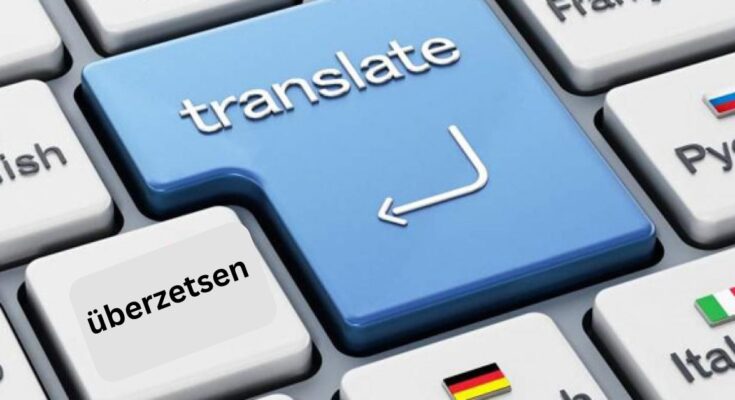Introduction
Have you ever encountered the term “überzetsen” and wondered what it means? This German word is significant in the realm of language and communication. Understanding “überzetsen” is crucial for anyone involved in translation, linguistics, or simply curious about language.
Let’s delve into this intriguing concept.
Historical Context of “überzetsen”
Origins of the Word
The term “überzetsen” is rooted in the German language, deriving from the verb “übersetzen,” which means “to translate” or “to transfer.” Its origins trace back to the early days of linguistic development in Germanic languages.
Evolution Over Time
Over the centuries, “überzetsen” has evolved, adapting to changes in language use and technological advancements. Its fundamental meaning remains, but its applications have expanded significantly.
Linguistic Analysis
Breakdown of the Word
“Überzetsen” combines “über,” meaning “over” or “across,” with “citizen,” meaning “to set” or “to place.” This literal translation hints at its core purpose: transferring meaning from one language to another.
Common Usages in Language
In contemporary usage, “überzetsen” is predominantly associated with translation. It encompasses both the act of translating text and the broader concept of transferring meaning across languages.
Applications of “überzetsen”
In Translation Services
“Überzetsen” is at the heart of translation services, enabling communication between different languages and cultures. Professional translators rely on this concept to convey accurate and meaningful translations.
In Technology
With the rise of technology, “überzetsen” has found applications in machine translation tools like Google Translate and DeepL. These tools use algorithms to translate text from one language to another.
In Everyday Communication
Beyond professional and technological applications, “überzetsen” is used in everyday communication, helping people understand foreign languages in various contexts.
Methods of Translation
Human Translators
Human translators bring a deep understanding of cultural nuances and Context to their work, ensuring accurate and meaningful translations.
Machine Translation
Machine translation uses algorithms and artificial intelligence to provide quick and often accurate translations, though it may lack cultural sensitivity.
Hybrid Approaches
Hybrid approaches combine human expertise with machine efficiency, aiming to leverage the strengths of both methods for optimal translation results.
Human Translators
Advantages
- Cultural Sensitivity: Humans understand cultural nuances.
- Contextual Accuracy: Ability to interpret Context.
- Flexibility: Adapt to various types of text.
Disadvantages
- Time-Consuming: Slower than machines.
- Costly: Higher cost compared to machine translation.
- Subjectivity: Possible bias or interpretation errors.
Real-World Examples
Professional translation agencies and freelancers who provide nuanced and contextually appropriate translations.
Machine Translation
Advantages
- Speed: Fast translations in real-time.
- Cost-Effective: Generally cheaper than human translators.
- Accessibility: Easily accessible via apps and online tools.
Disadvantages
- Lack of Nuance: May miss cultural Context.
- Errors: Potential for mistranslations.
- Dependency on Algorithms: Accuracy varies with the complexity of text.
Popular Tools
- Google Translate: Widely used supports many languages.
- DeepL: Known for its accuracy and nuanced translations.
- Microsoft Translator: Integrated with various Microsoft products.
Hybrid Approaches
Combining Human and Machine Efforts
Hybrid approaches integrate human translators’ precision with machine translation efficiency, aiming for the best of both worlds.
Case Studies
Examples include significant corporations using machine translation for initial drafts and human editing for final accuracy.
Comparative Table of Translation Methods
| Method | Features | Pros | Cons |
|---|---|---|---|
| Human Translators | Cultural context, nuanced | High accuracy, cultural sensitivity | Time-consuming, costly |
| Machine Translation | Algorithms, AI-driven | Fast, cost-effective, accessible | Potential errors, lack of nuance |
| Hybrid Approaches | Combination of human and machine | Balanced accuracy and efficiency | Complex to manage, cost variability |
Accuracy in Translation
Measuring Accuracy
Accuracy in translation is measured by the fidelity to the original text and the appropriateness of the translated text in Context.
Factors Affecting Accuracy
- Complexity of the Source Text
- Cultural Nuances
- Contextual Relevance
Cultural Nuances in Translation
Importance of Cultural Context
Cultural Context ensures the translated text resonates with the target audience, maintaining the original message’s intent and tone.
Challenges in Capturing Nuances
Translators must navigate idioms, expressions, and cultural references that may not have direct equivalents in the target language.
Security and Privacy Concerns
Data Security in Translation Services
We ensure that sensitive information remains secure during translation, especially for confidential or proprietary texts.
Ethical Considerations
Translators must adhere to ethical guidelines, ensuring accuracy without distorting the original message and maintaining client confidentiality.
Future of Translation Services
Technological Advancements
Advances in AI and machine learning promise more accurate and nuanced machine translations, reducing the gap between human and machine capabilities.
Predictions for the Future
Future translation services will likely see more integration of AI with human expertise, enhancing both efficiency and accuracy.
Case Studies
Successful Implementations
Examining successful implementations of translation methods can provide insights into best practices and innovative solutions.
Lessons Learned
Analyzing past efforts helps identify common challenges and effective strategies for overcoming them.
Conclusion
Understanding “überzetsen” and its applications is essential in our interconnected world. Whether through human translators, machine translation, or hybrid approaches, the goal is to convey meaning accurately and effectively. As technology advances, the future of translation services looks promising, with continued improvements in accuracy and efficiency.
FAQs
What does “überzetsen” mean?
“Überzetsen” is a German term meaning “to translate” or “to transfer,” and it is primarily used in the Context of translating languages.
How can I choose the correct translation method?
Consider the complexity of the text, the need for cultural sensitivity, and the available budget when choosing between human, machine, or hybrid translation methods.
Are machine translations reliable?
Machine translations are increasingly reliable for general text but may struggle with nuanced or culturally specific content.
What are the best tools for translation?
Popular tools include Google Translate, DeepL, and Microsoft Translator, each offering unique features and varying levels of accuracy.
How does culture affect translation?
Culture significantly affects translation, as it influences the meaning and appropriateness of language, requiring careful consideration to maintain the original message’s integrity.





